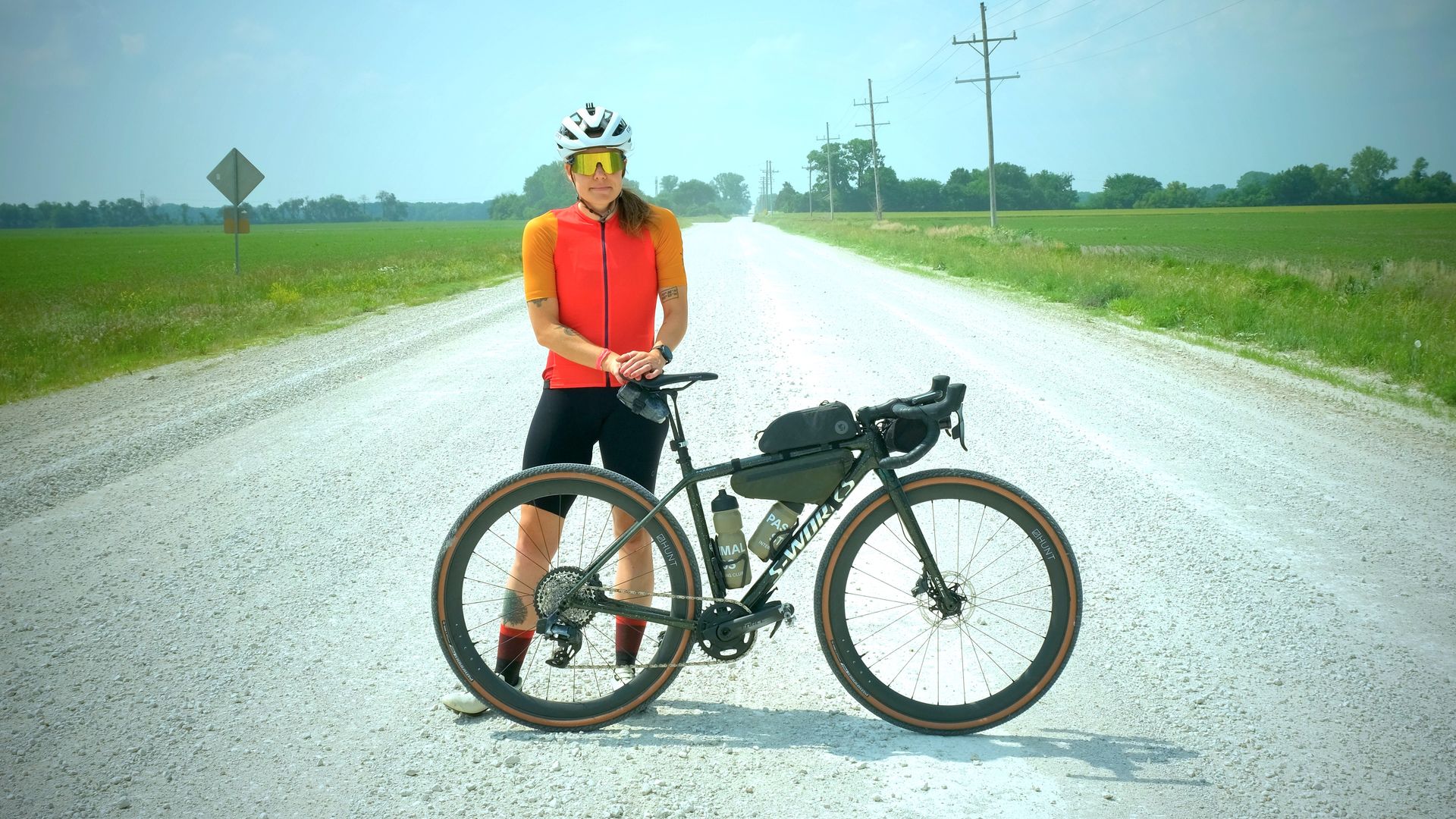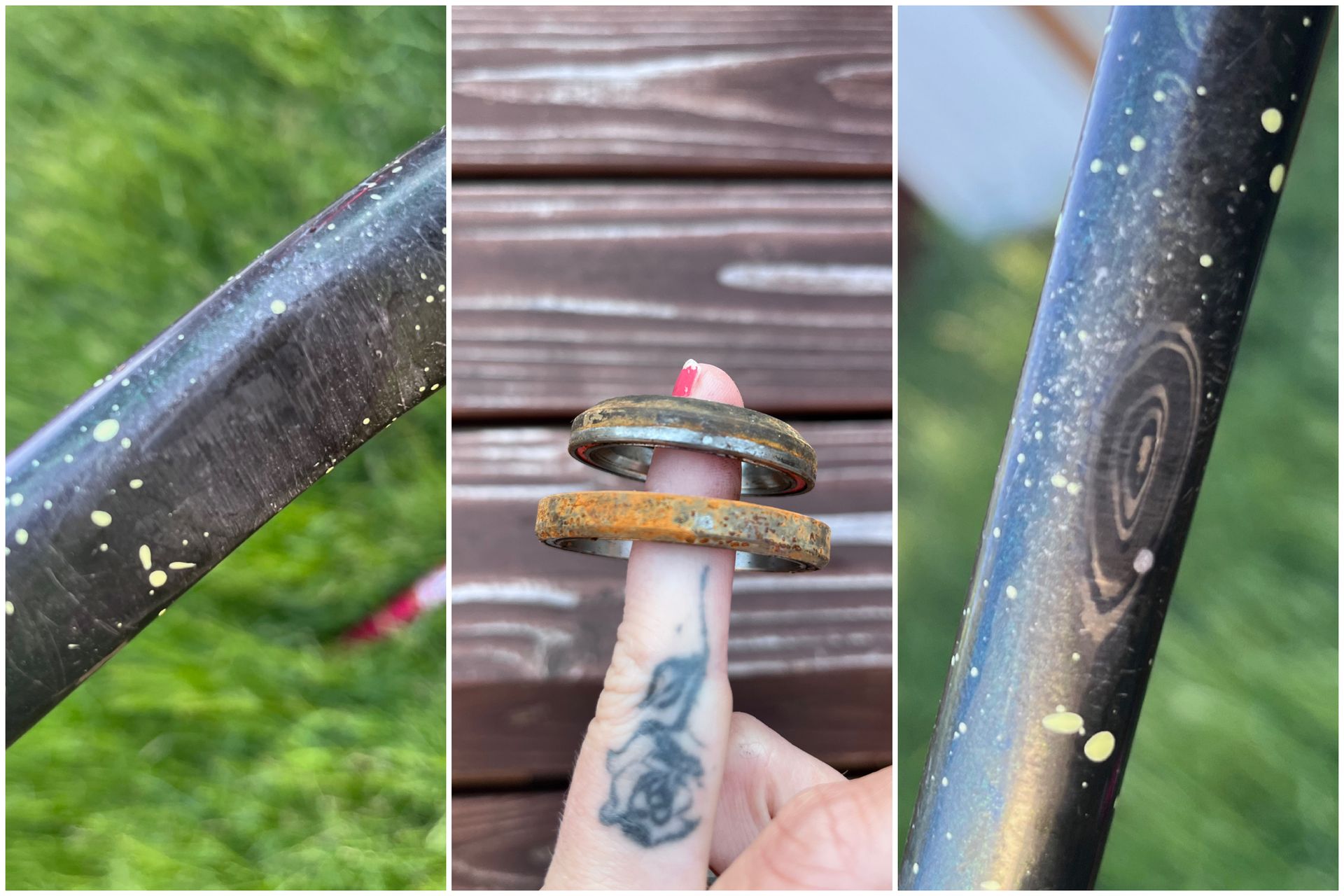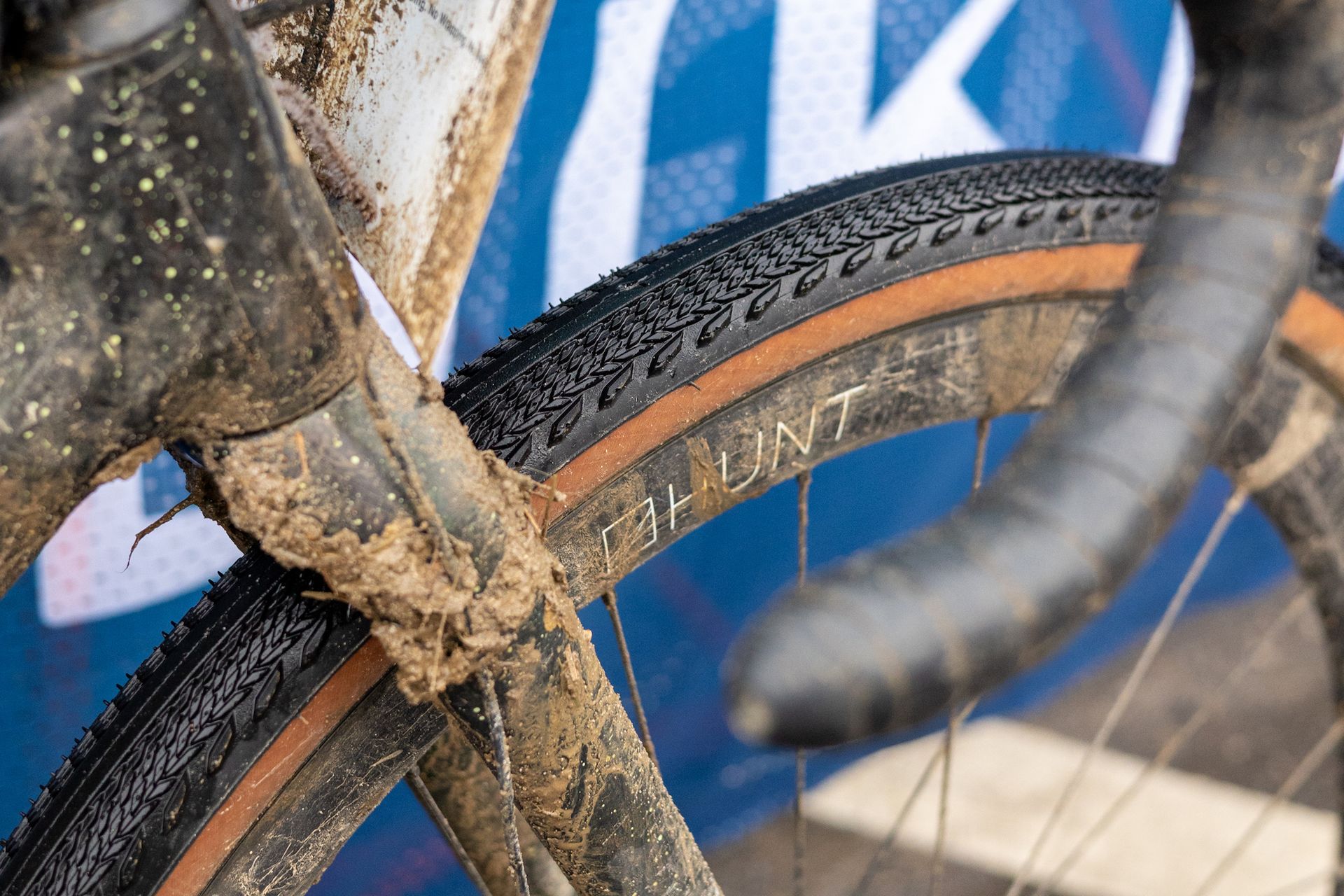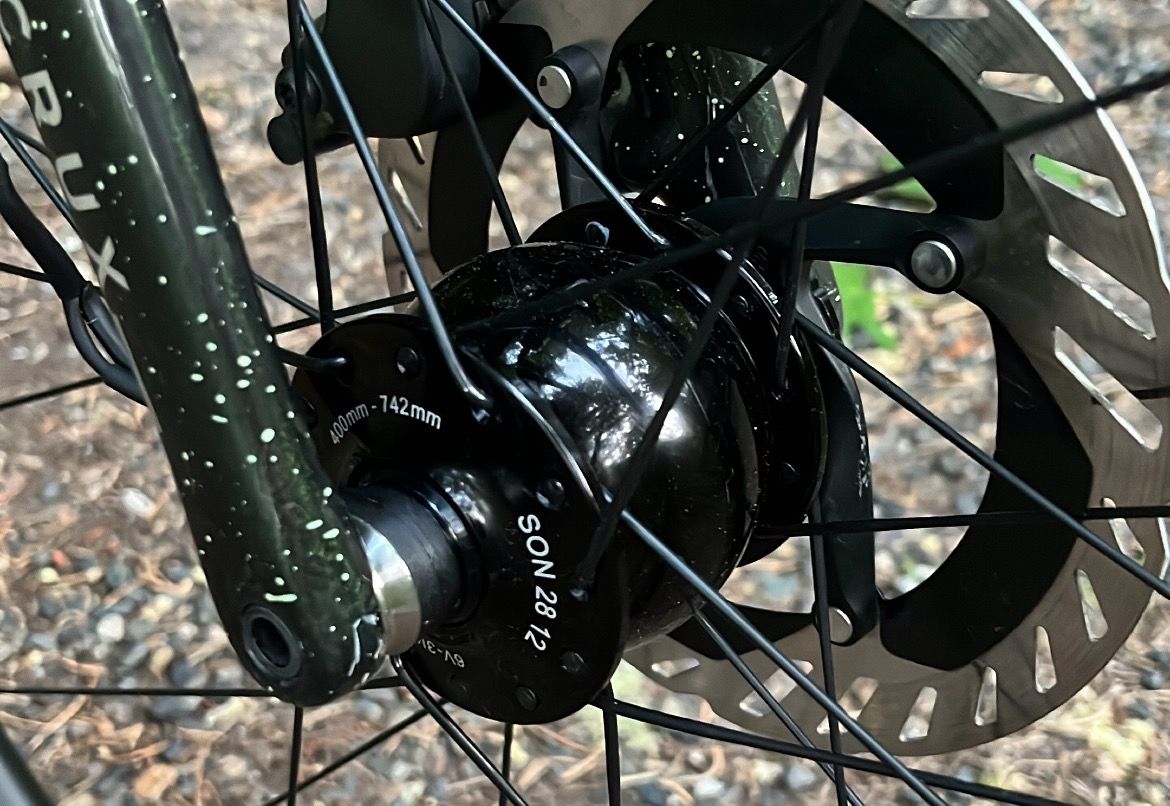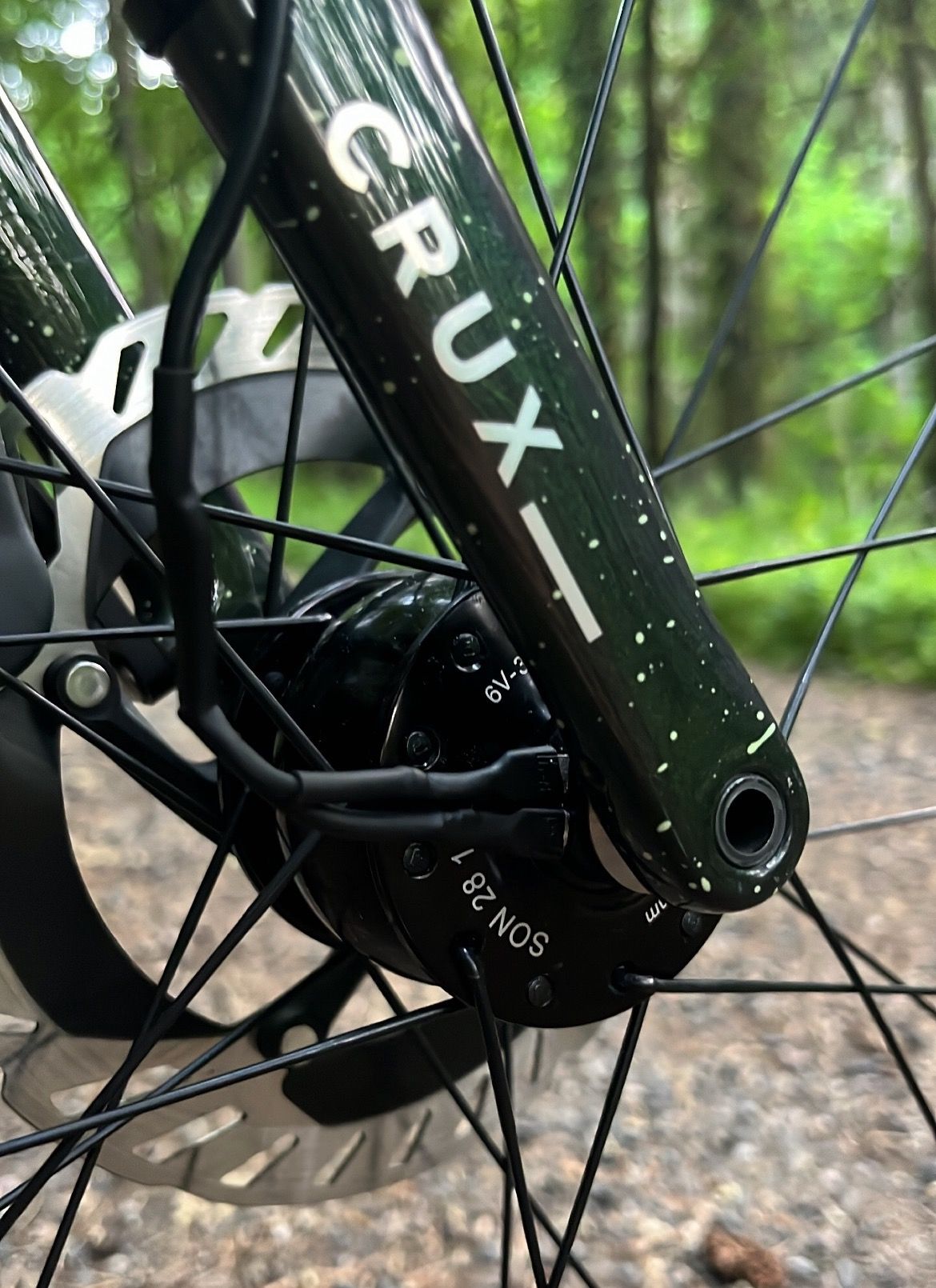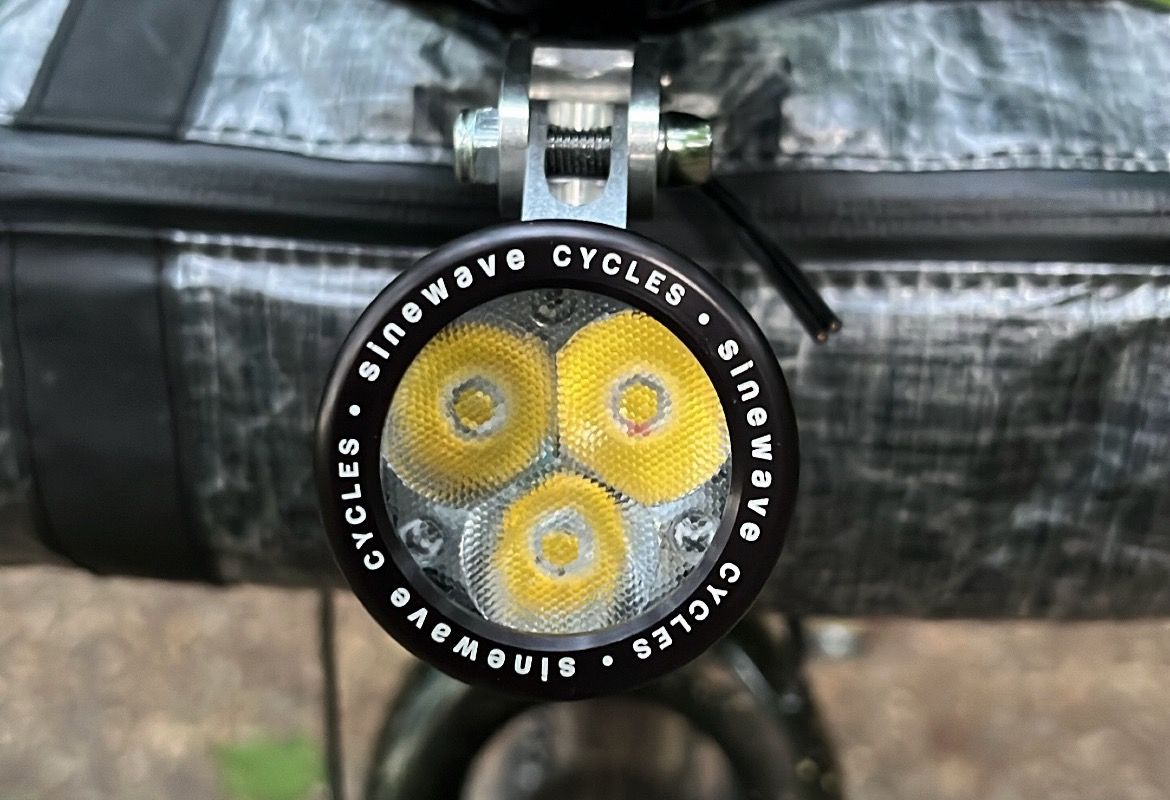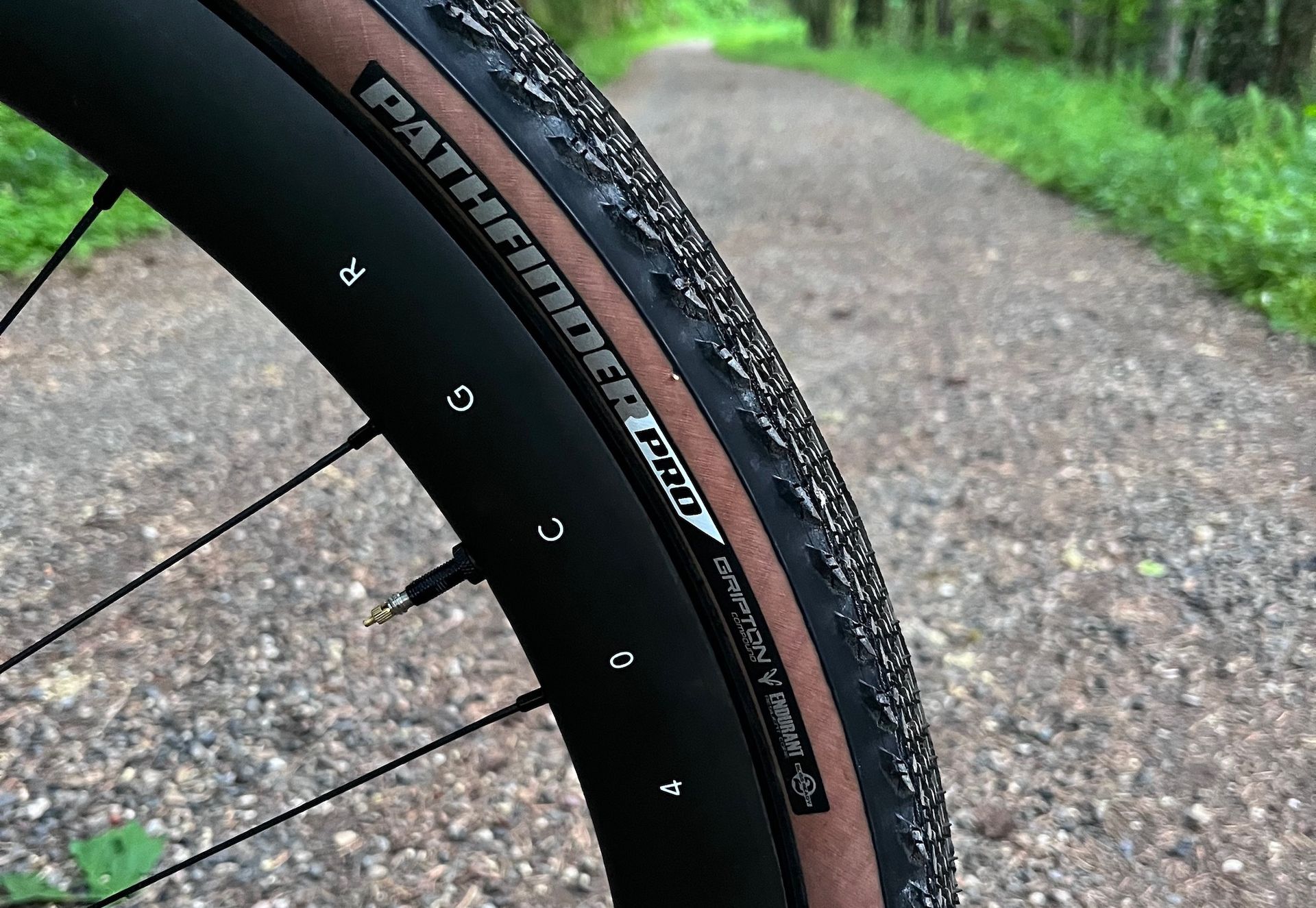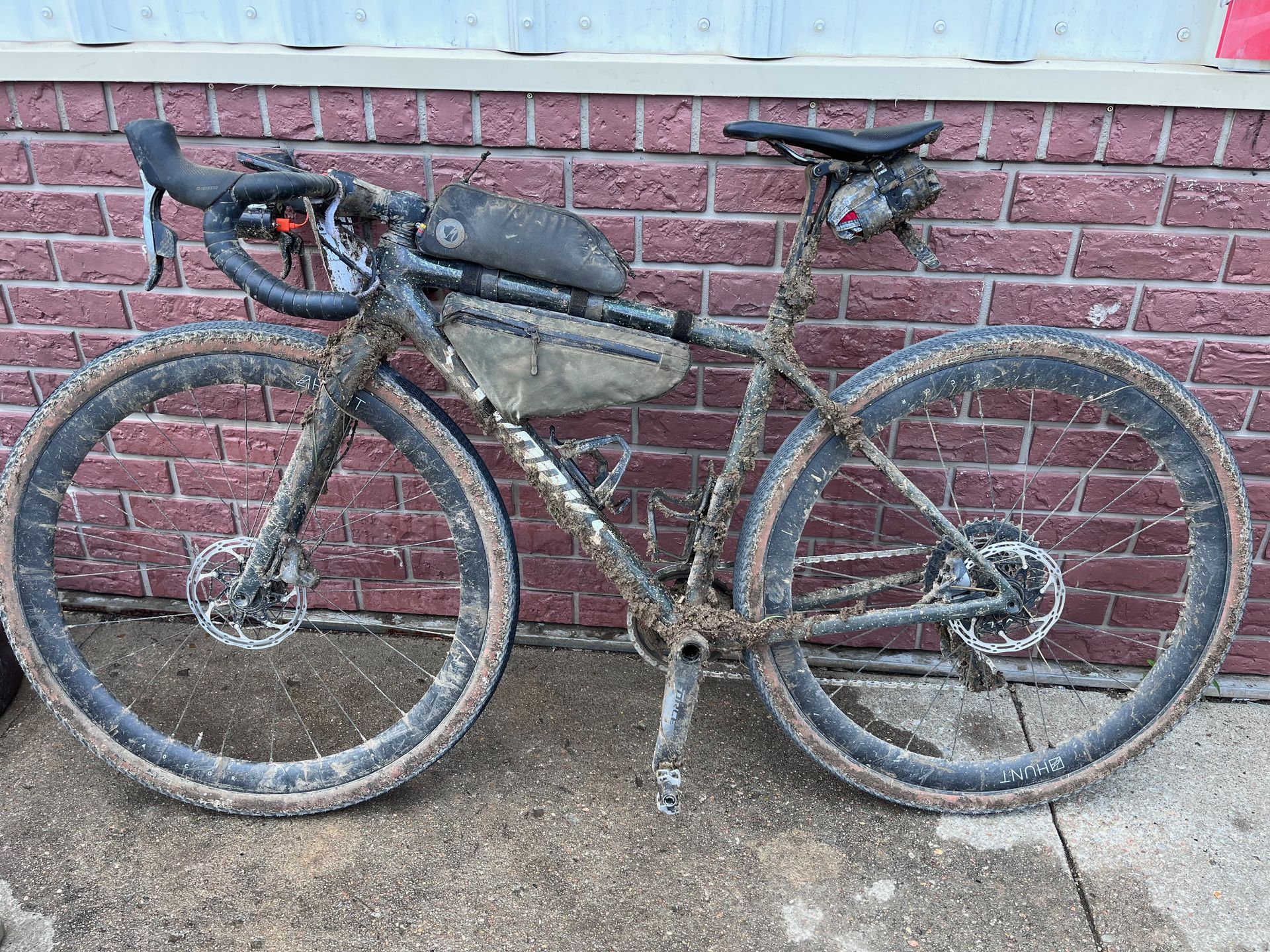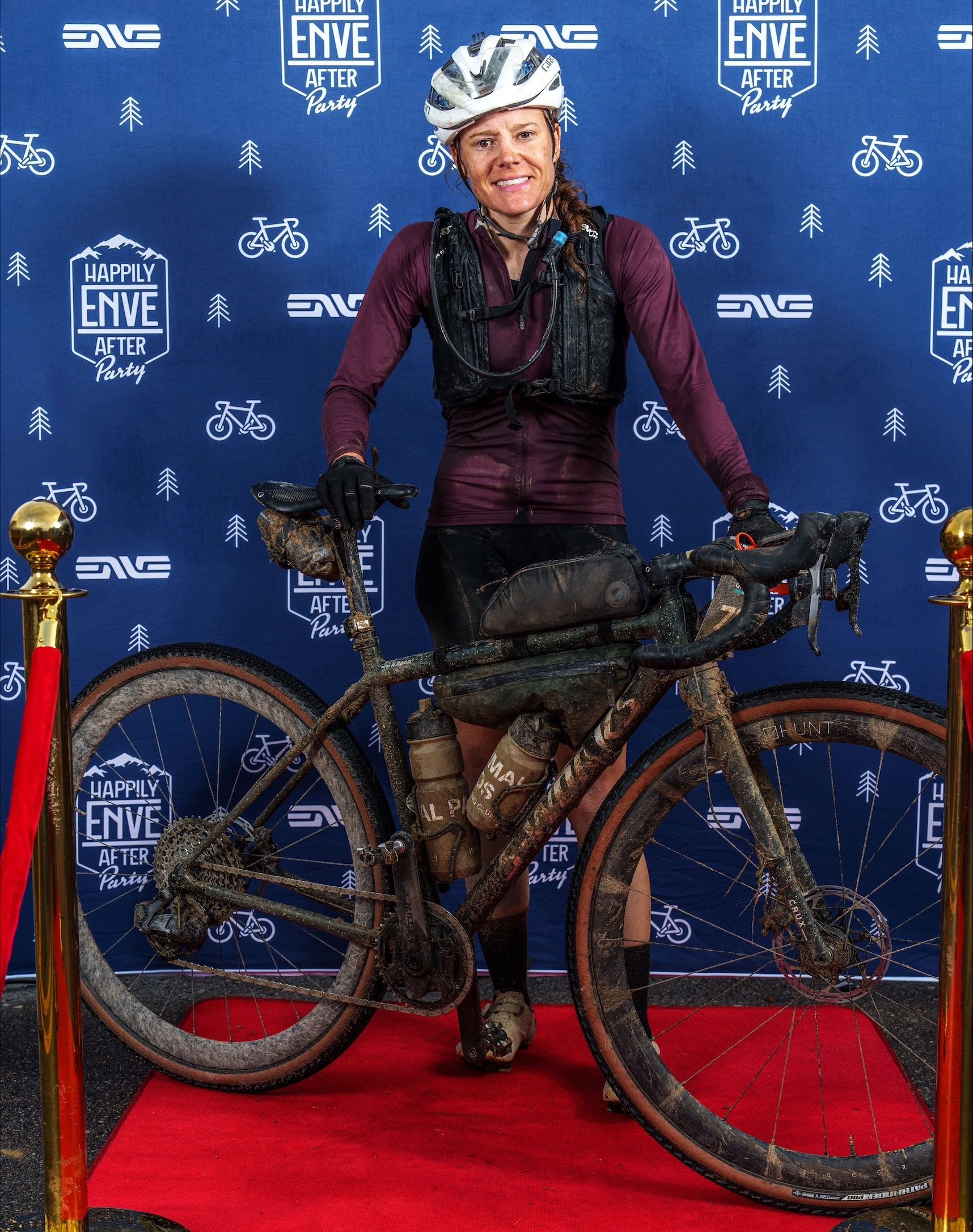The Ultimate Gear Test: this bike and gear survived an epic edition of the Unbound XL
352 miles of gravel, mud and thunderstorms is demanding on equipment — here's how mine fared


On Saturday, June 3, after some 28 straight hours in the saddle, I finished an absolute monster of a race, the Unbound XL — you can read about it here. The Unbound XL gravel is a 351-mile, self-supported, sleep-depriving adventure in the middle of Kansas, USA. No support means you're in charge of your own fueling and mechanicals. You're carrying lights, tools and enough food and water to suffice the 70+ miles between public convenience stores.
Ninety-four percent unpaved, the course traverses across the infamous flint rocks that are notorious for slicing tires, undulating terrain, exposed sun-baked roads, headwinds and, in this year's edition, thunderstorms, downpours and bike-destroying mud.
It's a true test of fitness, self-sufficiency, tenacity and your equipment. Here's the bike and gear I used and how it fared. Spoiler alert: my Specialized S-Works Crux frame is currently at the carbon repair shop for a seat stay fix.
The Bike: A Specialized S-Works Crux
Anne-Marije Rook with her Unbound XL race steed
My current gravel steed is built around a 2022 Specialized S-Works Crux frameset. I bought this at the end of December 2022 and have put some 3000 miles on it thus far. Incredibly lightweight, quick handling and with impressive tire clearance, this cyclocross-gravel hybrid is my kind of do-it-all bike. You could cull your stable of bikes by just having this frameset with two wheelsets. It does also cost about as much as two or three bikes, so there's that.
I built my Crux up with a SRAM Force XPLR AXS drivetrain with a 40T chainring and 10-44 cassette. Finishing kit consists of an Enve SES AR Road handlebar, Enve Road Carbon stem, Ergon CF All Road Leafspring seatpost —for some dampening on the rough roads— and a Ergon SR women's saddle.
I am very comfortable on this bike and had no reservations about riding it for the long distance and rough terrain. I did add a spacer below my stem for a slightly more upright position but other than that, I didn't do anything special — no suspension stem or double tape. I will say that even six days post-race, my hands are still numb. But it's hard to say whether suspension or an extra hand position thanks to aerobars would have improved the situation.
I was sad to learn that miles and miles and miles of the tacky, gritty, concrete-like mud did quite a number on my bike. It seemed like no amount of tire clearance could have prevented the mud build-up that happened on this course. The paint job on the fork and rear triangle is severely scratched and the mud-clogged tires rubbed sections of the seat stays raw. In some spots the grit rubbed through nine layers of carbon, and so the frame is currently being repaired at Ruckus Composites.
Get The Leadout Newsletter
The latest race content, interviews, features, reviews and expert buying guides, direct to your inbox!
I've seen many reports from other riders and don't think it's a reflection on my frame so much as an unfortunate consequence of the course conditions.
The Wheels: Custom Hunt 40 CGR
For the purpose of this race, my friends at Hunt loaned me a custom Hunt 40 Carbon Gravel Race wheelset. The custom bit? They laced the front carbon hoop to a Schmidt SON 28 dynamo hub!
A dynamo hub is an electromagnetic induction generator that converts the kinetic energy from the spinning wheel into electricity to power lights and other devices.
The Schmidt SON28 hub is widely considered to be among the best thanks to its low resistance, high efficiency and ability to put out decent power even at low and moderate moving speeds. Even so, there will always be some drag and a weight penalty for running a generator hub —the hub alone weighs 440g— but I figured it was well-worth it, knowing I'd always have light and could charge my Garmin or phone if need be.
The HUNT 40 CGR front wheel was laced to a Schmidt SON28 dynamo hub
The Hunt 40 Carbon Gravel Race wheelset is a race-focused, ETRTO-complaint hookless gravel wheelset made for speed. The wheels have a 40mm aero profile; wide, 25mm internal width; and weigh just 1383 grams for the set — not bad for a $1299 wheelset.
The rear wheel is laced to the brand's Sprint SL hub with rapid 7.5-degree engagement, which spins up quickly and aids in the general responsiveness of the wheels. The wheelset is definitely made to go fast and I was happy to have them in the all-out race pace of the first 45 minutes. Yet, I didn't find them overly stiff, either, which is a good thing. Even after 350 miles, my lower back never complained. I was also rather impressed with the wheels' durability. They proved to be absolutely bombproof despite the many challenges the Unbound course threw at them.
The SON28 hub never failed me either. Even when fully caked in mud, the hub did its job — powering my light and charging my computer in the daytime. I'd never used a dynamo hub on a performance bike before but if these ultra endurance or bikepacking events were to become a regular hobby of mine —I've now done two in one month!— I'd opt for dynamo power over battery packs. Yes, there's a weight penalty and some drag but, in my opinion, the ease of mind of a reliable source of electricity outweighs all of that.
The Schmidt SON28 dynamo hub
The Lights: Sinewave & Outbound
I connected the SON28 dynamo hub with Sinewave's brand new Beacon 2 light, just in from the manufacturer. These units have been on pre-order and will be shipping out to customers later this summer. It's the first update to the Beacon light, which was first released back in 2017.
What's neat about the Beacon 2 is that it can be powered by a dynamo, an external battery pack or both. It's got an integrated USB charger, which allows you to charge your GPS computer, phone or other USB devices when the light is in low mode or not in use.
The Beacon 2 delivers a flicker-free light down to 3 to 4 MPH. It's got a single LED low mode, three LED high mode as well as a blinking mode (only when battery powered). When powered by a Dynamo hub, the light is optimized at low-to-medium speeds, reaching 100 lumens at 5 MPH, 375 lumens at 8 MPH, 600 lumens at 10 MPH, and 750 lumens at 13 MPH. It's also got a standlight, which provides at least 5 minutes of light even if you're not moving. One can also wire in a taillight to be powered by the Beacon 2 unit. The whole package is waterproof and made in the USA.
The standlight proved very useful as I spent hours plowing through mud segments and then trying to clear the mud off my bike. I also ended up relying more on the Beacon than anticipated, as my Outbound Hangover head unit was experiencing some issues. It blew through its battery and the backup battery entirely too quickly, leaving me to rely solely on the Beacon. I would normally recommend a more powerful single unit, but the 750W Beacon reliably saw me through the night.
I also ran a Knog Plus rear light — chosen for its 40-hour run time — but it was so caked in mud that it couldn't really be seen anyway. Luckily, a rear light was never truly needed.
The Tires: Specialized Pathfinder Pro
Hunt's 40 CGR wheels wrapped in Specialized Pathfinder Pro 42mm tires
I waffled on my tire choice for quite some time leading up to Unbound. My choices were between the popular Schwalbe G-One RS tire —the winning tire of the men's 2022 Unbound 200 and XL events— and the tried-and-true Specialized Pathfinder Pro, which has a rich Unbound history.
While I'm a big fan of Schwalbe G-One RS tires and run them for most of the warm-weather riding season, I decided to stick with the Pathfinder Pros in 42mm width with 28 PSI tire pressure. I ran the same tire in last year's Unbound 100 and they served me well. They're not exactly light but they roll really well and you get just a little more grip and flat protection.
Unlike last year, however, I did suffer a puncture in the XL, and one too big for the sealant to do its job. I always carry a Dynaplug Carbon Racer tubeless repair kit on the side of my bottle cage and together with the sealant, the plug managed to seal the puncture and send me on my way again.
On-bike Storage
Undertaking a self-supported, 28-hour off-road adventure requires a bit more stuff than a normal ride. You've got your tools, a few extra tubes, perhaps some extra clothing and batteries, lots of nutrition and of course, your paint stick for mud clearing. To carry all that stuff, I strapped on a Fjallraven S/F Top Tube Bag, Mission Workshop's Slice Frame Bag and Lead Out!'s Dyneema Racelite saddle bag. I chose these bags based on their water-shedding materials, light weight and easy access points. I had brought a handlebar bag option as well but due to the placement of the race number, I couldn't access the bar bag and thus left it behind.
The frame and top tube bags held my nutrition, multi-tool and fix-a-flat necessities, sunscreen, rain jacket, eTap batteries and charging cables. The saddle bag held two additional tubes, a spare tire lever, patches and a second Co2 cartridge.
The triangle of the 49cm Crux is really rather small and I struggle to find frame bags that fit without having to compromise any water bottles. Using a side-loading bottle cage, I barely managed to squeeze a small water bottle underneath the Mission Workshop frame bag. The Crux does have mounts for a third bottle cage on the outside of the downtube but with the expected mud, that bottle would have only been a mud-catcher, further clogging up my bike.
The mud and grit got inside every bag and the zippers were starting to get stuck but all in all, I was happy with my bag choices.
Hydration Vest: Evoc's Hydro Pro 3
Rook's sporting the Evoc Hydro Pro 3 in her finisher portrait after the 352-mile Unbound XL gravel race
In a gravel race setting, it's quite difficult to take your hands off the bars. The terrain is bumpy and unpredictable and so one relies on a hydration bladder and hose to not only carry extra liquids but to fuel on the go. Some carry the hydration bladders inside a frame pack and attach the drinking hose with a magnetic clip to the bars. Others, like myself, wear a hydration vest. For Unbound XL and the Rapha Yomp Rally in May, I wore Evoc's Hydro Pro 3 vest.
I like this hydration backpack because it's comfortable and lightweight, it carries a 1.5L bladder and sits a tad higher on your back than most vests to allow you easy access to your jersey pockets. It sports a close-to-the-body fit so the weight doesn't bounce around and you maintain complete freedom of motion.
I also like the many pockets the vest offers. There's one mesh and one zippered pocket on the front of each strap. I used these compartments for valuables and quick-access items like my money, eye drops and gels. The vest's main compartment on the rear houses the hydration bladder but also has two bigger pockets for a jacket, tools, or, in my case, a small battery pack.
Clothing & Accessories
Anne-Marije Rook competing in the 2023 Unbound XL event
Comfort plays an important role when you're spending 28 hours in the saddle. For this endeavor I turned to the Velocio Luxe bibs to keep my lady bits in the best shape possible and paired them with Velocio's Ultralight Long Sleeve jersey in an effort to keep the sun off my skin. This understated jersey is made of a lightweight material blend of recycled polyester and elastane. Made for the hottest days, it offers plenty of breathability as well as UPF30 sun protection. Despite its minimal nature, the jersey still sports three full-sized pockets and one small zippered pocket.
I also wore a pair of Sportful Merino wool socks and threw on a Gorewear Shakedry jacket in the torrential downpour.
Shoes: the new (and no longer so white) Specialized S-Works Recon
Helmet: Giro Aries
Sunglasses: Tifosi Rail, clear lenses
Gloves: Specialized Women's Body Geometry Dual-Gel Long Finger Gloves. These provide comfortable gel padding, and the XS size actually fits my teeny hands. Even so, the long hours spent in the same position caused quarter-sized blisters to form on my palms. The gloves were thoroughly covered in mud and grit, so I threw them away post-race.
Computer: The new Garmin 540 Solar. With a battery life of up to 32 hours in 'demanding use' and 60 hours in battery saver mode, I opted for something that would last me the whole race. Due to the cloudy conditions and night riding, I did plug the computer into the Beacon light unit just in case though. A 352-mile race is not the time to test the battery limits!
What I'd do differently
I guess I'd use aerobars?
Prior to the race, I had been strongly against the use of aerobars in mass-start events. Even in the XL, there were 191 starters rolling out at once and people's questionable bike handling and cornering simply makes me nervous. However, the field was quick to spread out and I soon learned that I was in the minority for nothing having aerobars or, as endurance cyclists call them, "comfort bars ."The bars are meant to offer riders another riding position, giving the hands some much-needed relief while also offering some aerodynamic benefits on the long straights and descents. Anytime someone I was riding with made themselves comfortable in the aerobars I had to work slightly harder to keep up. But more than anything, I longed for some pressure relief on my hands. As mentioned above, sizable blisters formed on the palms of my hands and eventually, I didn't know where to put them. I was very envious of the aerobars. I generally felt safe around everyone in the pack using them and while it's probably best they were banned in the more populated 200-mile pro race, I can now see why aerobars have a place in ultra-distance racing.
Calories in the hydration bladder, not in the bottles
I set out for the race with Skratch Lab's High Carb drink mix in my bottles and plain water in the hydration bladder. I chose this order of things because it's easier to dissolve the drink mix in a water bottle, and bottles are easier to clean when you're swapping between different mixes. But drinking from the hydration bladder was far easier than removing my hands from the bars to reach down for a bottle. Additionally, due to the epically muddy conditions, I ended up sacrificing the contents of two bottles to clear the mud off my drivetrain, thereby wasting precious liquid calories. Thus, I revisited my approach mid-way through the race.
Headlamp
I noticed that many riders brought a standard headlamp instead of helmet lights. They're lightweight and have a long battery life so it makes sense. As long as you bring a bright main unit, you'd only need the headlamp to see things up close —like your mud-caked drivetrain. Seeing as I had some bad luck with my head unit, I would consider using a headlamp next time.
Photochromic Lenses
I opted for clear lenses as the weather was alternating between thunderstorms and stifling heat, and I'd be riding a large portion of the race at night. I always wear glasses to shield my eyes from road spray and bugs and clear lenses were fine, it just would have been nice to have had some shading for those hours on the sun-baked plains. Photochromic lenses darken in bright light, which would have been the best of both worlds.

Thank you for reading 20 articles this month* Join now for unlimited access
Enjoy your first month for just £1 / $1 / €1
*Read 5 free articles per month without a subscription

Join now for unlimited access
Try first month for just £1 / $1 / €1

Cycling Weekly's North American Editor, Anne-Marije Rook is old school. She holds a degree in journalism and started out as a newspaper reporter — in print! She can even be seen bringing a pen and notepad to the press conference.
Originally from The Netherlands, she grew up a bike commuter and didn't find bike racing until her early twenties when living in Seattle, Washington. Strengthened by the many miles spent darting around Seattle's hilly streets on a steel single speed, Rook's progression in the sport was a quick one. As she competed at the elite level, her journalism career followed, and soon she became a full-time cycling journalist. She's now been a cycling journalist for 11 years.
-
One domestic road race can produce equivalent emissions to flying from London to New York and back, twice: the why and how of more sustainable events
Sustainability specialist and road race organiser Travis Bramley set out to discover if his love for cycling could align with his commitment to the environment. Here’s what he found
By Travis Bramley Published
-
 Is Mathieu van der Poel winning races “in zone 2” helping or hindering cyclo-cross?
Is Mathieu van der Poel winning races “in zone 2” helping or hindering cyclo-cross?The Dutch world champion has turned up off-road now, and immediately won twice. Is this fun?
By Adam Becket Published
-
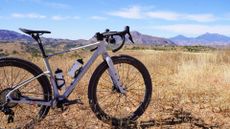 A first look at Mondraker's Arid Carbon, a bike for 'whatever your idea of gravel is'
A first look at Mondraker's Arid Carbon, a bike for 'whatever your idea of gravel is'Long reach, short stem: the Mondraker Arid Carbon is a gravel bike done a little differently
By Anne-Marije Rook Published
-
 When it came to the 350 challenging miles of Unbound XL, these were the only bib shorts I considered wearing – and yes, they’re on sale this Black Friday period
When it came to the 350 challenging miles of Unbound XL, these were the only bib shorts I considered wearing – and yes, they’re on sale this Black Friday periodMy all-time favourite bibs are now 30%. Don’t snooze on this deal. Your undercarriage will thank you
By Anne-Marije Rook Published
-
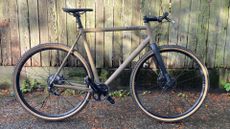 I used to think flat bar gravel bikes were silly, now I've tried one I know they're silly, but I'm into it
I used to think flat bar gravel bikes were silly, now I've tried one I know they're silly, but I'm into itFlat bar gravel bikes are a thing, and here's why they make sense for some folks and what to know if you're flat-bar-curious
By Tyler Boucher Published
-
 SRAM releases new Red XPLR AXS groupset in 13-speed, plus mega wide, aerodynamic gravel wheels and gravel-specific handlebar
SRAM releases new Red XPLR AXS groupset in 13-speed, plus mega wide, aerodynamic gravel wheels and gravel-specific handlebarComponent manufacturer SRAM releases updated Red XPLR AXS 13-speed groupset, and wide, aerodynamic gravel wheels.
By Cat Glowinski Published
-
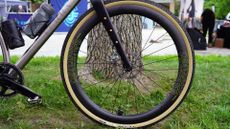 Aero is everything: Parcours introduces the FKT wheelset, aero gravel hoops promising tangible gains
Aero is everything: Parcours introduces the FKT wheelset, aero gravel hoops promising tangible gainsBritish wheel innovators Parcours has unveiled its new gravel race wheelset with the bold claim of being a first of its kind.
By Anne-Marije Rook Published
-
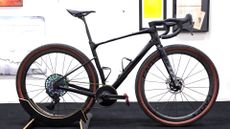 New prototype Giant gravel bike raced at Unbound
New prototype Giant gravel bike raced at UnboundAt Unbound Gravel, we got glimpses of new, unreleased bikes, including a prototype Giant, which we are pretty sure is a new top-end Revolt. Giant is mum on the details but here's what we know.
By Anne-Marije Rook Published
-
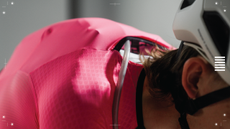 Forget hydration vests, at Unbound Gravel, hydration skinsuits are all the rage
Forget hydration vests, at Unbound Gravel, hydration skinsuits are all the rageMeet Rapha's Blaerosuit’, a skinsuit with built-in hydration reservoir functions
By Anne-Marije Rook Published
-
 90+ hours of battery life: this unreleased COROS cycling computer could disrupt the market
90+ hours of battery life: this unreleased COROS cycling computer could disrupt the marketSpotted at Unbound, the unreleased COROS Dura head unit could just be the Garmin and Wahoo competitor long-distance cyclists have been waiting for
By Anne-Marije Rook Published
